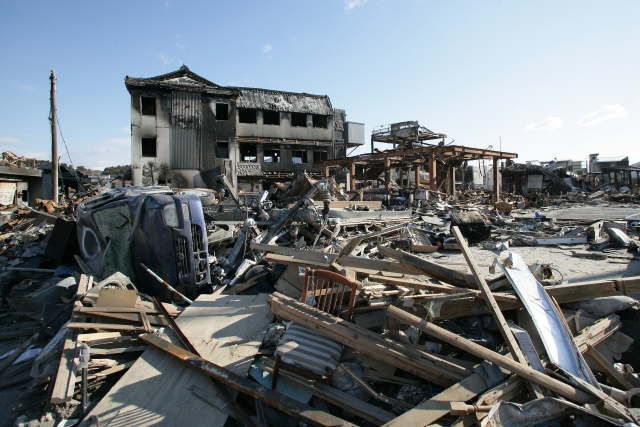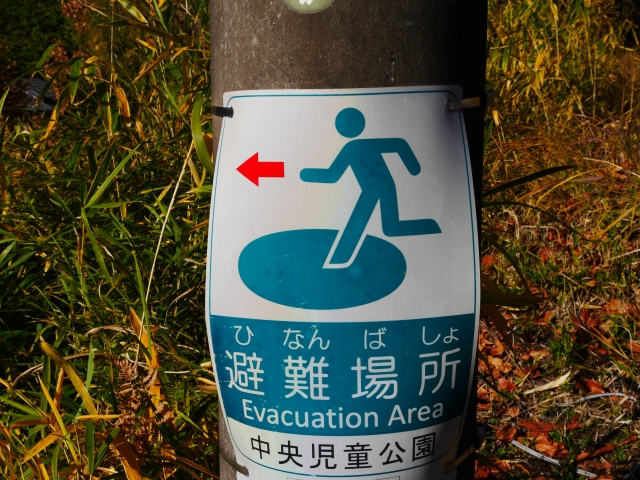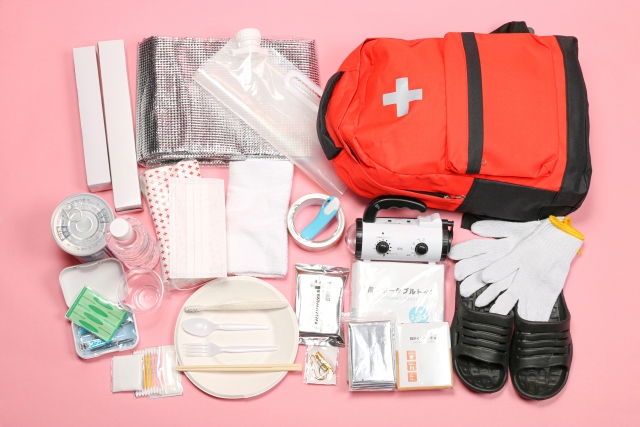What You Need to Know to Live in Earthquake-Prone Japan! A Summary of Effective Earthquake Countermeasures
2025-07-28
Japanese Culture & Customs

Japan is one of the most earthquake-prone countries in the world, and most of the Japanese archipelago is exposed to earthquake risks.
The reason is that Japan’s land lies at the boundaries of multiple tectonic plates.
In Japan, various measures have been prepared to deal with earthquakes, which are difficult to predict in terms of when they will occur.
For those living abroad who are planning to move to Japan, or for those already living in Japan, it is advisable to be informed about Japan’s earthquake preparedness and what to have ready.
This article summarizes essential information about earthquakes for living in Japan.
Earthquake Disasters in Japan
In Japan, about 1,000 earthquakes with a magnitude between 4.0 and 4.9 and about 150 earthquakes with a magnitude of 5.0 or greater occur each year (average between 2014 and 2023).
It is important to be aware of how frequently earthquakes occur on average.
Reference: Japan Meteorological Agency, “About Earthquakes”
Major Earthquakes That Have Occurred in Japan
Japan has experienced many large-scale earthquakes in the past. Among them, the following three caused significant casualties:
[Great Kanto Earthquake: September 1, 1923: M7.9]
Deaths/Missing: Approx. 105,000 people
The Great Kanto Earthquake struck the capital region during lunchtime and was accompanied by strong winds throughout the Kanto area. These factors combined to cause the total destruction by fire of over 210,000 buildings.
[Great Hanshin-Awaji Earthquake: January 17, 1995: M7.3]
Deaths/Missing: Approx. 6,000 people (including disaster-related deaths)
This was a direct inland earthquake that struck a localized area in southern Hyogo Prefecture. Until the Great East Japan Earthquake, it had been considered the worst post-war natural disaster. Many buildings collapsed due to the quake.
[Great East Japan Earthquake: March 11, 2011: M9.0]
Deaths/Missing: Over 20,000 people (including disaster-related deaths)
The Great East Japan Earthquake brought an unexpected massive tsunami to Iwate, Miyagi, and Fukushima Prefectures. In Onagawa Fishing Port in Miyagi, the tsunami reached a height of 14.8 meters.
Additionally, the tsunami caused a meltdown at the Fukushima Daiichi Nuclear Power Plant, significantly influencing global awareness regarding nuclear power.
References: Cabinet Office Disaster Management Information Page, “100 Years Since the Great Kanto Earthquake” Special Page; “Special Feature: Great East Japan Earthquake”
Moreover, not only the direct shaking from earthquakes but also secondary disasters such as tsunamis and fires can be extremely serious.
For example, a tsunami occurs when an undersea earthquake pushes seawater upward, forming massive waves that strike coastal areas. During the Great East Japan Earthquake, the damage caused by the tsunami was especially devastating, resulting in significant loss of life.
Fires are also common disasters that occur immediately after an earthquake. Fires can break out due to ruptured gas lines or short circuits in electrical systems. If roads are blocked, fire trucks may be delayed, which can cause the damage to spread further.

Future Major Earthquakes Expected in Japan
To minimize damage from earthquake disasters, Japan uses advanced forecasting technology to predict potential large-scale earthquakes.
Of particular concern is the Nankai Trough Earthquake, which is expected to cause severe damage, including to the Tokyo metropolitan area.
This earthquake is expected to be in the magnitude 8 to 9 class and has an estimated 80% chance of occurring within the next 30 years.
The predicted damage area covers a wide range from Okinawa and Kagoshima to Kanagawa, Tokyo, Chiba, and Ibaraki, including the Tokyo metropolitan area.
Reference: Cabinet Office Disaster Management Information Page, “Earthquake Disasters”
Earthquake Countermeasures by Local Governments
To minimize damage during earthquakes, local governments in Japan are taking various initiatives.
Conducting Disaster Drills
As disasters vary depending on regional characteristics, each municipality must take tailored actions.
Municipalities are working to raise disaster awareness among residents through disaster drills, events, and consultation services.
Nowadays, services that share local disaster initiatives via apps, as well as disaster drills that resemble games, are available to help residents gain knowledge more easily.
Residents are encouraged to actively participate in local disaster drills.
Distribution of Multilingual Disaster Information Pamphlets
Many municipalities create multilingual disaster information pamphlets for people who do not understand Japanese.
To avoid confusion during an emergency when only Japanese guidance is available, it is recommended to obtain multilingual pamphlets in advance.
The Cabinet Office’s Disaster Management Information Page also provides multilingual posters titled “Disaster Preparedness Tips for Foreigners.”
How to Find Disaster Information for Your Municipality
The following methods are effective for finding disaster drill information in your area:
-
Check disaster-related information on your municipality’s official website
-
Search for municipality information on the Cabinet Office Disaster Management Information Page
-
Use your municipality’s disaster information app
-
Check newsletters issued by the municipality or neighborhood association
You can obtain information about disaster drills and multilingual disaster guidance through these methods.
Individual Earthquake Preparedness
Earthquakes can happen at any time. Therefore, it is important to be prepared on a regular basis.
This section outlines how residents in Japan should prepare for earthquakes.
Emergency Supplies and Stockpile Checklist
Here is a list of emergency supplies and stockpile items you should have ready.
Please adjust the items as needed according to your family’s size, gender, age, and religious needs.
[Emergency Supplies]
-
Drinking water
-
Emergency food
-
Mobile phone charger
-
Flashlight
-
Portable radio
-
Spare batteries
-
Helmet or disaster prevention hood
-
Valuables
-
Cash
-
Towels
-
Masks
-
Change of clothes
-
Rain gear
-
Tissues / Wet wipes
-
Work gloves
-
Knife / Can opener / Bottle opener
-
Lighter / Matches / Candles
-
Plastic bags
-
Copies of health insurance cards and passports
-
First aid medicine
[Stockpile Items]
-
Drinking water (approx. 3 liters per person per day)
-
Food
-
Blankets / Sleeping bags
-
Toiletries
-
Pots / Kettle
-
Portable toilet
-
Blue sheet
-
Toilet paper / Tissues / Wet wipes
-
Newspapers
-
Blue sheet (duplicate)
-
Tools
-
Disposable chopsticks / Paper cups / Paper plates
-
Plastic wrap / Aluminum foil
For more detailed information on disaster preparedness items, please refer to the appropriate resources.
What You Can Do at Home to Mitigate Damage
Disaster mitigation refers to efforts to minimize damage when a disaster occurs.
Since earthquake occurrences cannot be controlled, it is important to protect yourself and your family through mitigation.
Please refer to the following to implement mitigation measures at home:
[Secure Your Furniture]
If you own your home, securely fasten your furniture to the walls using nails, etc., to prevent them from toppling over during an earthquake.
In Japan, tension rods and other tools that do not damage walls are available for rental housing, so consider using such methods.
[Do Not Store Heavy or Fragile Items in High Places]
During earthquakes, items on shelves may fall due to shaking and cause injury.
To prevent this, make it a habit not to place heavy or breakable items in high places.
Also, for fire prevention, installing a seismic circuit breaker (a device that automatically shuts off electricity when it detects an earthquake) is effective. These can help prevent “post-earthquake fires” caused by power restoration, especially in densely populated areas.
Know Your Evacuation Shelter
Evacuation shelters are facilities where people can temporarily stay when living at home becomes difficult due to a disaster. They play a role in ensuring the safety of disaster victims.
Examples include school gymnasiums and community centers, and more than 80,000 shelters are designated across Japan.
In contrast, the term “evacuation site” refers to places designated for urgent evacuation to protect life during a disaster. These are designated based on the type of disaster under the Basic Act on Disaster Management.
Check your local government’s official website to identify your nearest evacuation site and shelter.
Evacuation sites and shelters can also serve as meeting places for families after a disaster.
In areas where tsunamis are expected, separate tsunami evacuation buildings or routes to higher ground may also be designated. If you live near the coast, be sure to know the route and time it takes to reach the tsunami evacuation site.

Apps and Websites Useful During Disasters
Finally, here are some apps and websites useful in disaster situations.
If you use these regularly for disaster-related information, you’ll be ready to use them when needed.
[NHK WORLD – JAPAN “Disaster & Emergency”]
This official site by NHK provides disaster information such as earthquakes, tsunamis, and typhoons in multiple languages, mainly English. You can check real-time updates, evacuation information, and damage reports. Video news, maps, and explanations of past disasters make it a reliable resource for foreign residents and travelers in Japan.
[“Safety tips” App for Multilingual Disaster Information]
This free app supports 13 languages and provides notifications on disasters like earthquakes, tsunamis, and typhoons. Supervised by the Japan Tourism Agency, it offers push notifications on earthquake occurrence, emergency warnings, and evacuation orders, making it useful for both visitors and residents. It also includes features like evacuation site searches, medical facilities, and transportation information.
[Japan Safe Travel (JST) by JNTO]
Provided by the Japan National Tourism Organization (JNTO), this site offers disaster and safety information for international visitors. It provides updates on earthquakes, typhoons, public transportation, airports, and tourist sites in easy-to-understand English. The service is also linked with LINE for alert notifications, making it accessible even to short-term travelers.
[Yahoo! Disaster Alert]
The Yahoo! Disaster Alert app not only provides earthquake alerts but also covers J-Alerts, volcanic activity, and more.
You can also check lifeline updates, which are helpful during evacuation. Some interface features and safety confirmation messages are available in English.
[Ministry of Land, Infrastructure, Transport and Tourism Disaster Portal]
This portal by the MLIT compiles necessary information before and after disasters.
The site supports multiple languages, including English, Chinese, and Korean.
Summary
To live safely in earthquake-prone Japan, it is essential to acquire knowledge and prepare in advance.
Use this article as a guide to begin your disaster preparedness and mitigation efforts. Remember, daily readiness can be the difference between life and death when disaster strikes.
Moreover, it is crucial to stay aware not only of earthquakes themselves but also of secondary disasters such as tsunamis and fires. These hazards can endanger lives within minutes after an earthquake. To protect yourself, be clear about “what to take” and “where to evacuate,” and review these regularly.


